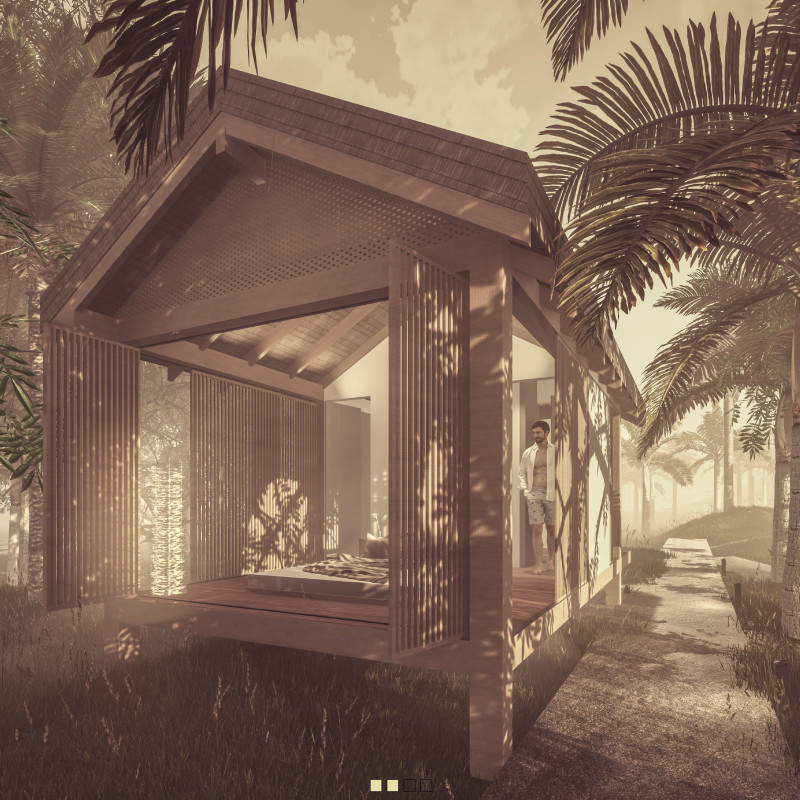5 key facts about this project
The structure is compact, utilizing a minimal footprint while accommodating essential living areas. The project emphasizes a strong connection between interior and exterior spaces, fostering a sense of openness and interaction with the surrounding landscape. Key elements include natural ventilation systems, an elevated foundation, and a thatched roof, each contributing to the architectural narrative.
Sustainable Material Choices
The materials selected for the "TENT +" project reflect a conscious choice for ecological sustainability and local craftsmanship. The primary structural component is timber, sourced sustainably to enhance durability and visual warmth. A thatched roof not only provides insulation but also pays homage to local architectural traditions. Pebble stones are utilized for flooring to ensure efficient drainage while maintaining a natural aesthetic. The incorporation of lightweight fabric for mosquito protection promotes comfort and flexibility in the living environment.
What sets this project apart from conventional designs is its multifunctional adaptability. The layout can be configured to serve various purposes—ranging from a family dwelling to communal spaces or creative hubs. This versatility is achieved through architectural features such as folding doors, which allow for spatial reconfiguration as needed.
Spatial Organization and Functionality
The internal layout of "TENT +" is organized for efficiency without sacrificing comfort. The design includes a terrace for entry and social interaction, a compact kitchen, private sleeping quarters, and essential bathroom facilities, all designed to maximize usability within a limited area. The focus on communal living is evident, encouraging interaction and connection among residents while providing private retreat spaces.
Overall, "TENT +" stands as a notable example of architecture that aligns with the principles of modern sustainable living, tailored specifically to its geographical context. The integration of traditional and contemporary elements creates a cohesive design that respects local culture while addressing current and future living needs. For a detailed examination of the architectural plans, sections, and design elements, readers are encouraged to explore the full project presentation to gain deeper insights into this innovative architectural approach.


























